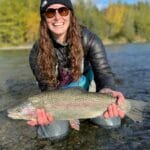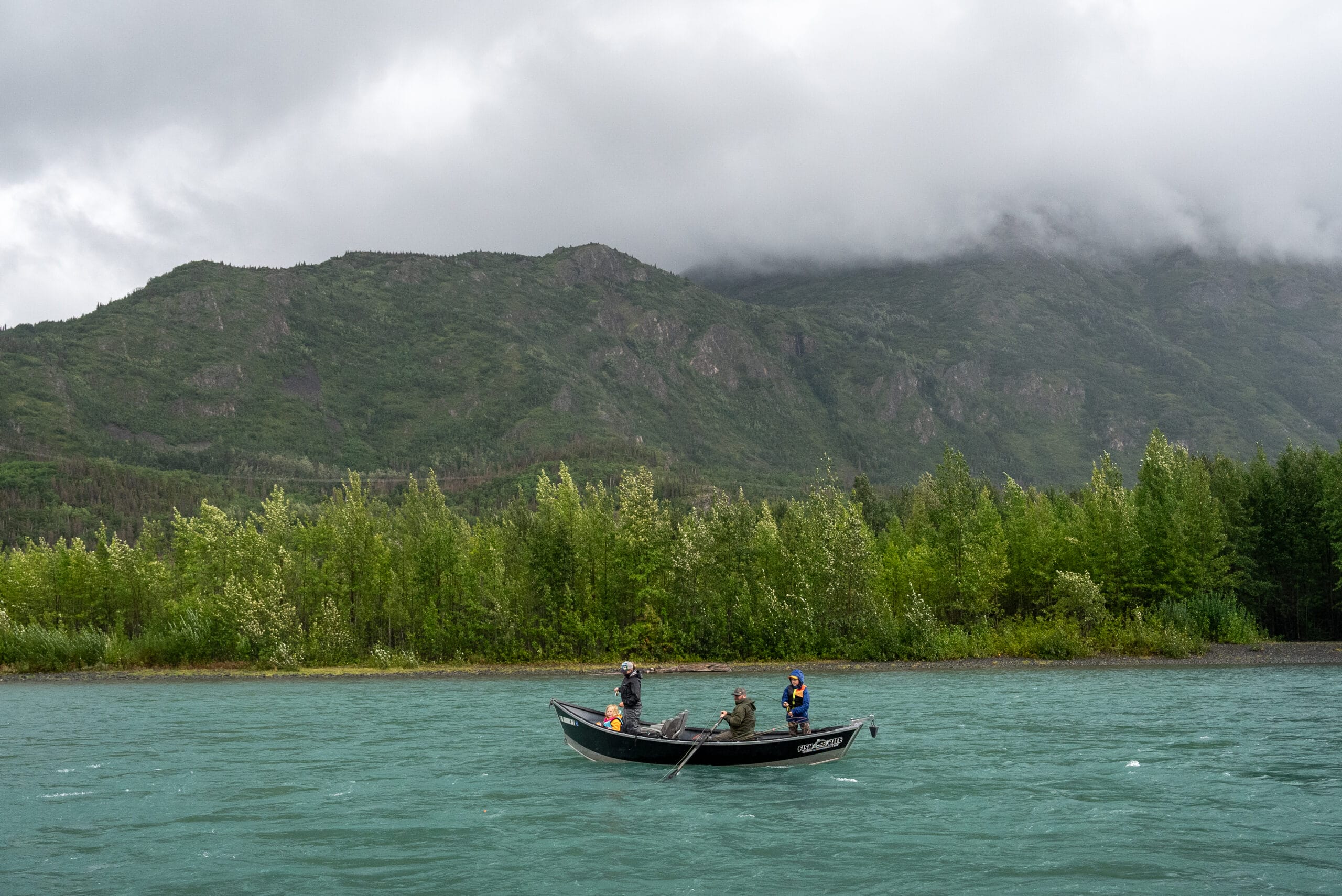Renowned Alaskan river is part of TU’s Priority Waters
Alaska’s famed Kenai River is beloved by many. Its frigid, glacial-blue waters run 82 miles and offers great fishing throughout. The abundance of easily accessible fishing opportunities attracts visitors and residents alike. This cherished river is one of Trout Unlimited’s Priority Waters, and I’m here to tell you more about it and our work there.
About the Kenai
This road accessible river is the state’s most popular sportfishing destination. It is also the largest sockeye salmon sport fishery. Millions of sockeye surge through the river starting in early June. During sockeye season, anglers cram the banks, standing shoulder to shoulder to harvest these delicious fish. The river sees more than 400,000 angler days per year and more than 600,000 salmon are harvested.
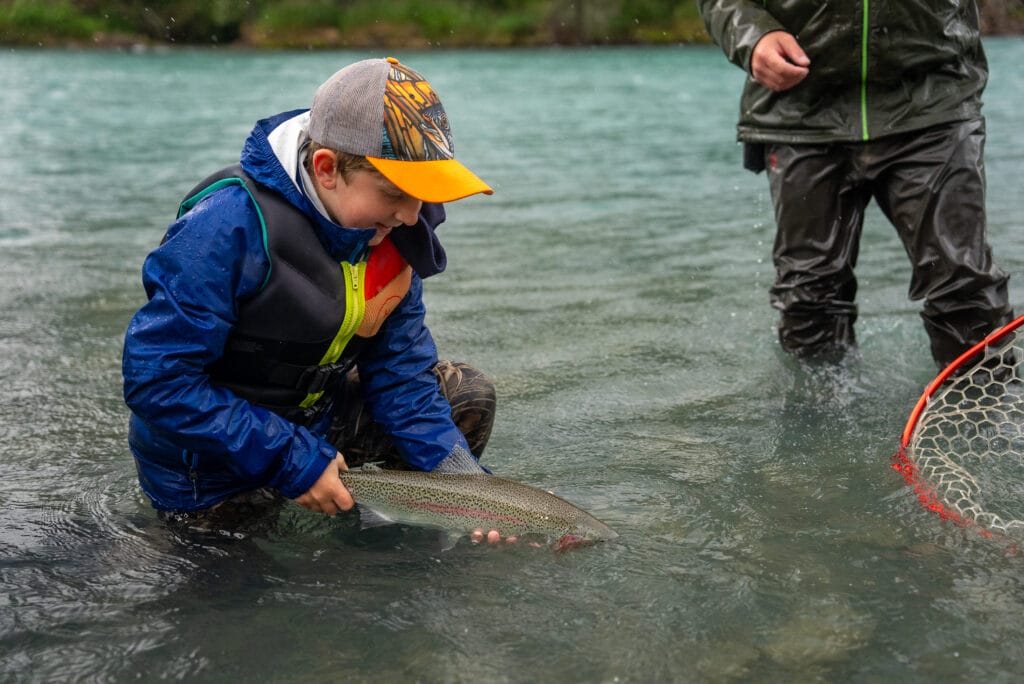
The Kenai River was put on the map and initially drew anglers far and wide for its famous Kenai River Kings: Chinook salmon. Historically the river supported a strong run of large Chinook salmon. The world record Chinook was caught in the Kenai River in 1985 and weighed 97 lbs. However, in recent years, fishing for Chinook has been closed or heavily restricted due to low returns of fish. This follows a trend we see statewide. The Kenai River still hosts a strong and popular coho run.
With such prolific salmon runs, it is no surprise that the Kenai is also a trout angler’s dream. The river’s two lakes, Kenai and Skilak, are excellent overwintering habitat for both trout and juvenile salmon. Every fall Kenai rainbows gorge themselves on salmon eggs and flesh. This abundant food source is a large part of the reason trophy size rainbow trout are prevalent throughout the river. Kenai River rainbow trout may be as old at 13 years with some reaching over 30 inches. Studies by the Alaska Department of Fish and Game show that some spawning areas can have densities of 1,000 fish per mile.

Heart bursting experiences
The Kenai holds a special place in this author’s heart. It’s where I caught my first salmon. I learned to fly fish and caught my first fish on the fly in the Russian River, one of its clearwater tributaries. Every year my husband and I harvest 30 sockeye from its waters, the exact amount we know we’ll eat in a year without letting any of this precious resource go to waste. We float the river in our light blue cataraft many weekends from early spring to late fall, chasing rainbow trout. My relationship with the Kenai is like many other Alaskans. This river is an incredible place to both fill the freezer and get in some phenomenal fly fishing.
TU’s work on the Kenai
Trout Unlimited’s Alaska staff have long fished in and loved the Kenai, but we didn’t have the staff to really focus our efforts here until recently. This river’s vast importance to sport anglers influenced us to include it in our Alaska priority waters, and we hired staff to work here shortly thereafter.
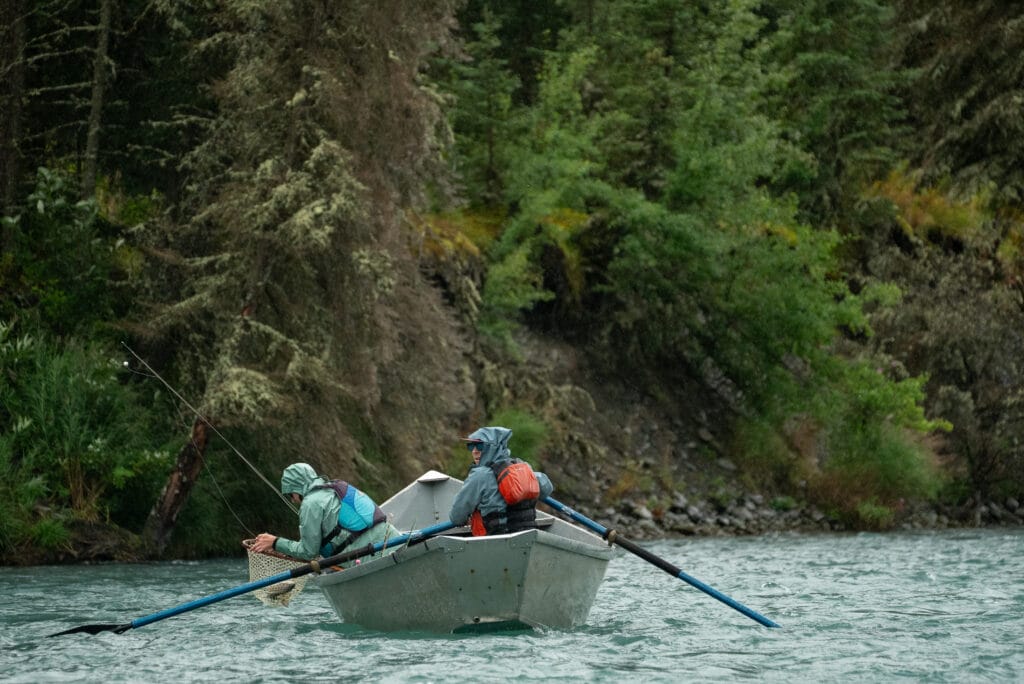
The Kenai is still productive while being well utilized by anglers, but the intense pressure undoubtedly impacts its fisheries. Alexa Millward was one of the few female fishing guides on the Kenai for several years before joining the TU Alaska team. As the Kenai Peninsula engagement coordinator, she works to engage and educate anglers in caring for the rivers they love to fish. Alexa spends much of her time demonstrating low impact angling measures, to show people easy actions they can take to help keep these fisheries healthy. Catch and release tactics include pinching barbs, netting fish with a rubber net and releasing fish upstream. Harvest tactics include harvesting from abundant species, only keeping what you can eat in a year and caring for your catch in a thoughtful and timely manner. You can often find her attending or hosting community events or creating fun and engaging social media content to demonstrate these tactics.
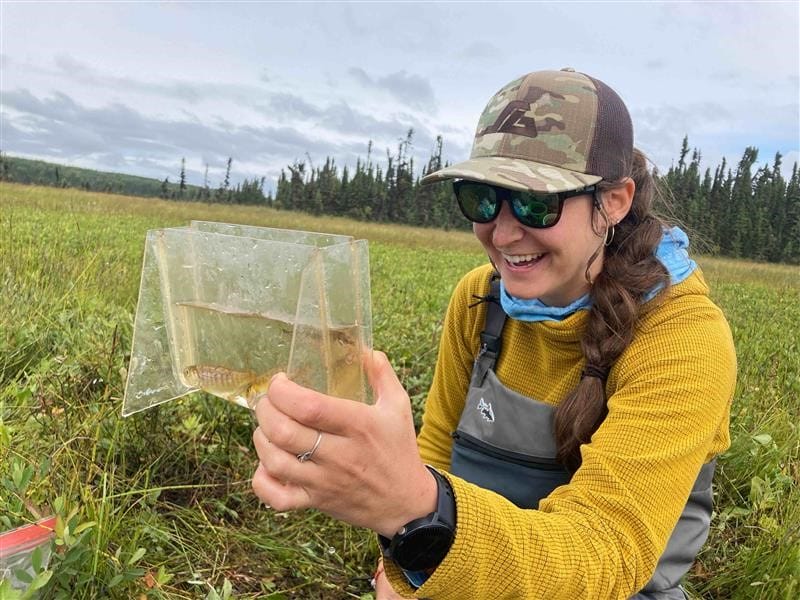
A program to benefit the river and its fish
In 2023, Alexa launched the Kenai Guide Ambassador program, which empowers local guides to be educators and advocates for fish and fish habitat conservation on the Kenai Peninsula. Kenai Guide Ambassadors are dedicated to and passionate about maintaining the health of the river and fisheries. They follow low impact angling methods with their clients day in and day out, and advocate for fish habitat conservation and science-based management. The program had 18 guides in its inaugural year and will be bringing on 10 more in the upcoming year as the program grows. These guides spend the most time on the water and play a powerful role in safeguarding the fish their businesses depend upon.
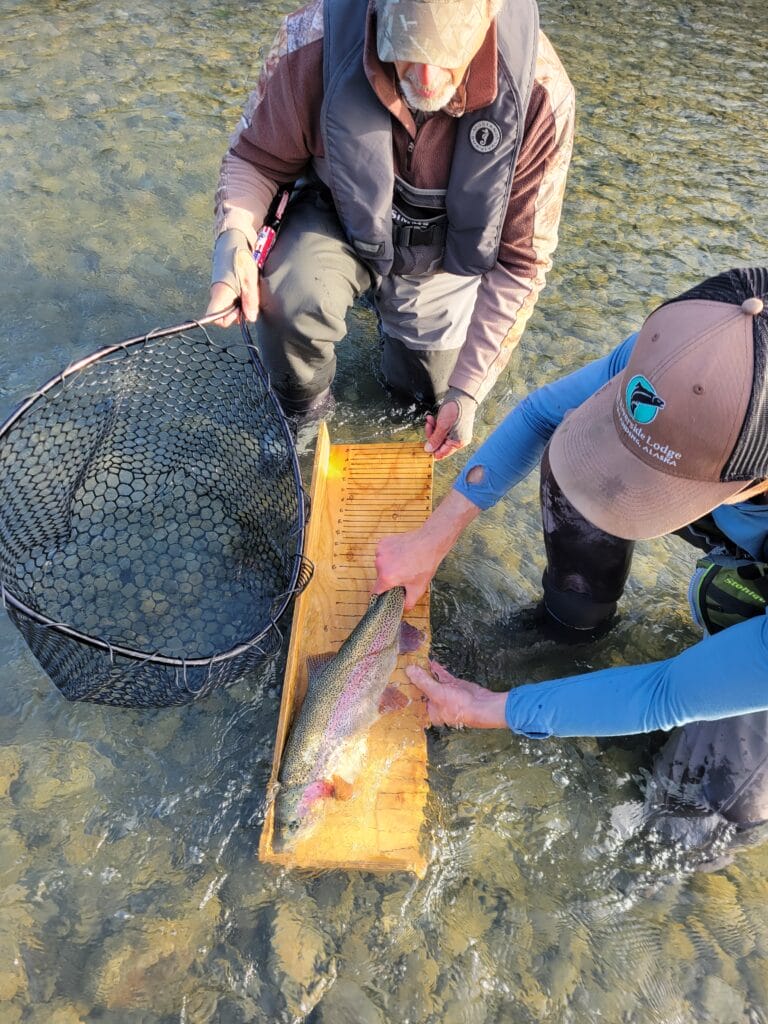
Alexa also spends her time addressing other threats to the river, like undocumented fish habitat. It may be hard to believe that such popular river has areas that are undocumented, but that is indeed the case. Waters do not receive basic safeguards for fish habitat under Alaskan law if they are not officially documented in the state’s Anadromous Waters Catalogue. Alexa has worked with the Kenai Watershed Forum and TU’s Kenai Chapter to survey and document critical spawning and rearing fish habitat. Together they have documented over 15 miles of salmon streams, including many tributaries of the Kenai River.
Trout Unlimited’s work on the Kenai is just getting started. There are many threats we are working to address like aquatic invasive species and degraded riparian habitat. Anglers are one the of the most effective voices for fish habitat conservation. We are excited to continue to work alongside you all in caring for this extraordinary river.



